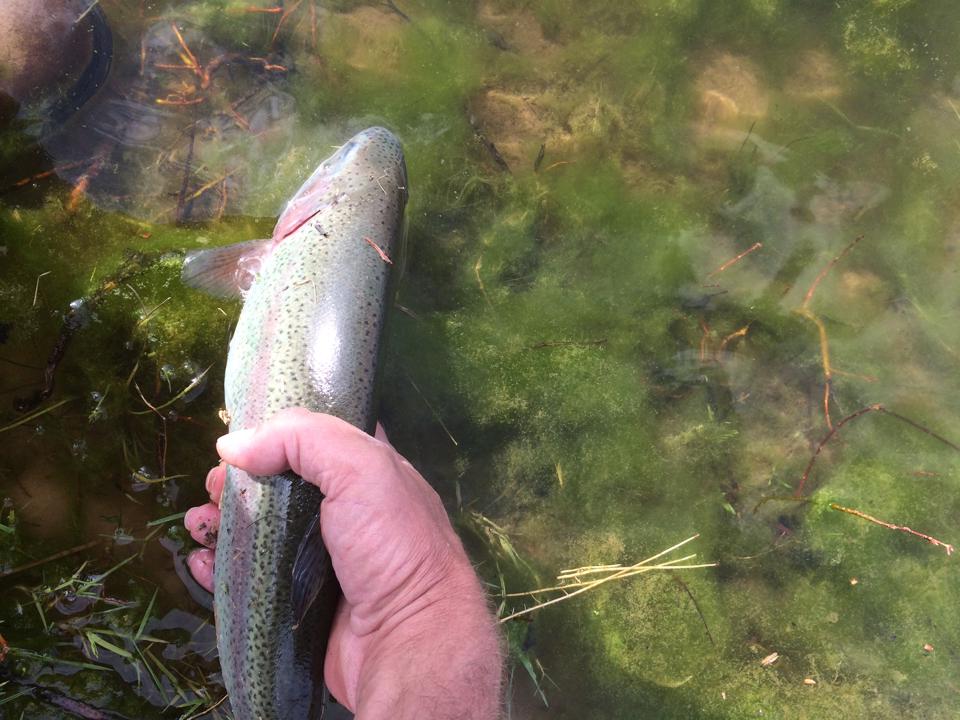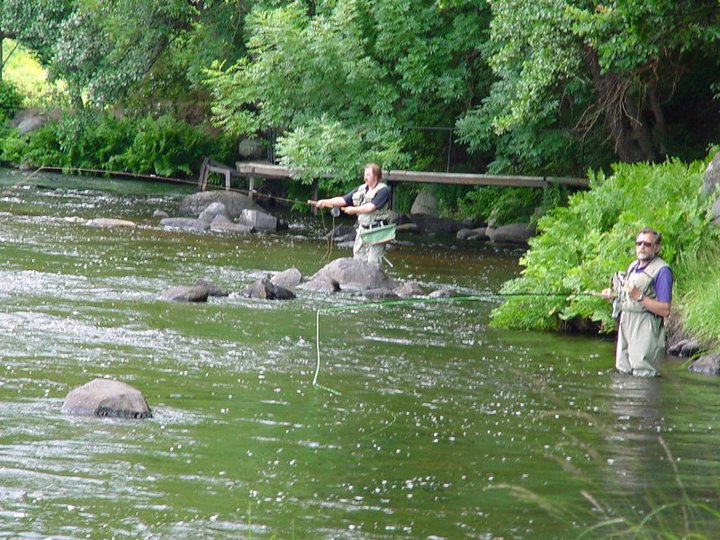Where Did That Trout You Just Caught Come From? |
| Veröffentlicht von Oliver (wb_admin) am Aug 29 2014 |
Avid fly fishermen have very likely caught a species of trout during their careers. They are possibly the most popular sport fish,
and much is invested in trout fishing. In fact, the art of fly fishing was cultivated around angling for trout and has been extended to other species and habitats.
So if you are fishing for trout in European waters, it could be that your fish was raised in a hatchery.
Native to fresh waters of the northern hemisphere, trout species have also been introduced to waters of every continent
So if you are fishing for trout in European waters, it could be that your fish was raised in a hatchery.
Native to fresh waters of the northern hemisphere, trout species have also been introduced to waters of every continent
excepting Antarctica by zealous sport fishermen (among other kinds of fish, such as the European Perch mentioned in our last article).
They prefer cool water, and generally spawn in shallow streams. Exceptions to the trout exclusivity of living in freshwater are the rainbow trout which undergo physiological changes allowing them to live in seawater and spend several years in the ocean; they are called steelhead. They return to their freshwater spawning grounds to spawn, and are able to spawn several times.
Many species of the family Salmonidae bear the name trout, some of the most popular being rainbow trout and their many subspecies (Oncorhynchus mykiss), brown trout (Salmo trutta) and brook trout (Salvelinus fontinalis) – please do forgive me, should I have not mentioned your favourite kind of trout! It is a large family with many genera, species and subspecies. Except for the steelhead, all have a similar life-cycle and feeding habits, making them great game fish. Most species of trout have a life span of about seven years, but lake trout (Salvelinus namaycush) can live for several decades and attain fantastic weights.

Since trout are a favourite food fish (for humans) and trout sport fishing has become so popular, many native populations have been depleted. Demand is so high, that fish farming and fish hatcheries have grown into a substantial industry. Trout are raised in fish farms, though carp and salmon are much more in demand, and have proven to be resilient and fast growing. Fish hatcheries differ from fish farms: they exist solely to raise larval and juvenile fish. These are then transferred to a fish farm or seeded into habitats. *
Fish hatcheries and farms in Europe are commonplace. Because of the popularity of sport fishing, many ponds and rivers have been stocked with non-native fish, of which many are trout species, as well as native fish in the effort to restore populations of sport fish in rivers, lakes and streams. Examples are the attempts at restoration of trout and salmon species in the Rhine River and the streams that feed it. These populations are closely monitored.
Keeping the balance between restoring native fish populations and providing sport anglers with their catch is very difficult but definitely worthwhile. In closed water systems such as former sand quarries and ponds, fish are often stocked expressly for sport fishing. Here non-native species are not a danger to the ecosystem.
Long-term studies of populations of non-native fish have proven many species to be invasive and disastrous to the indigenous populations. Introduced species can bring diseases with them, compete with native fish for food, and can also wipe out native species of fish and invertebrates through predation. This can be the case with rainbow trout when introduced in non-native habitats, while at the same time some local populations are considered threatened or endangered in their native waters due to habitat loss and overfishing.
If you should plan a fly fishing adventure in the United States of America, you may want to know that the U.S. Fish and Wildlife Service has established a National Fish Hatchery System to support the conservation of native fish species. (http://www.fws.gov/fisheries/nfhs/) These are generally open to the public and often have a visitor’s centre, where you can find lots of information.
Learning to fly fish is part hard practice, part tying your flies, and a big part theory. Educate yourself about sustainable sport fishing. We’d love to see you in our courses or on our fly fishing trips!
Zuletzt geändert am: Aug 29 2014 um 06:15
Zurück


